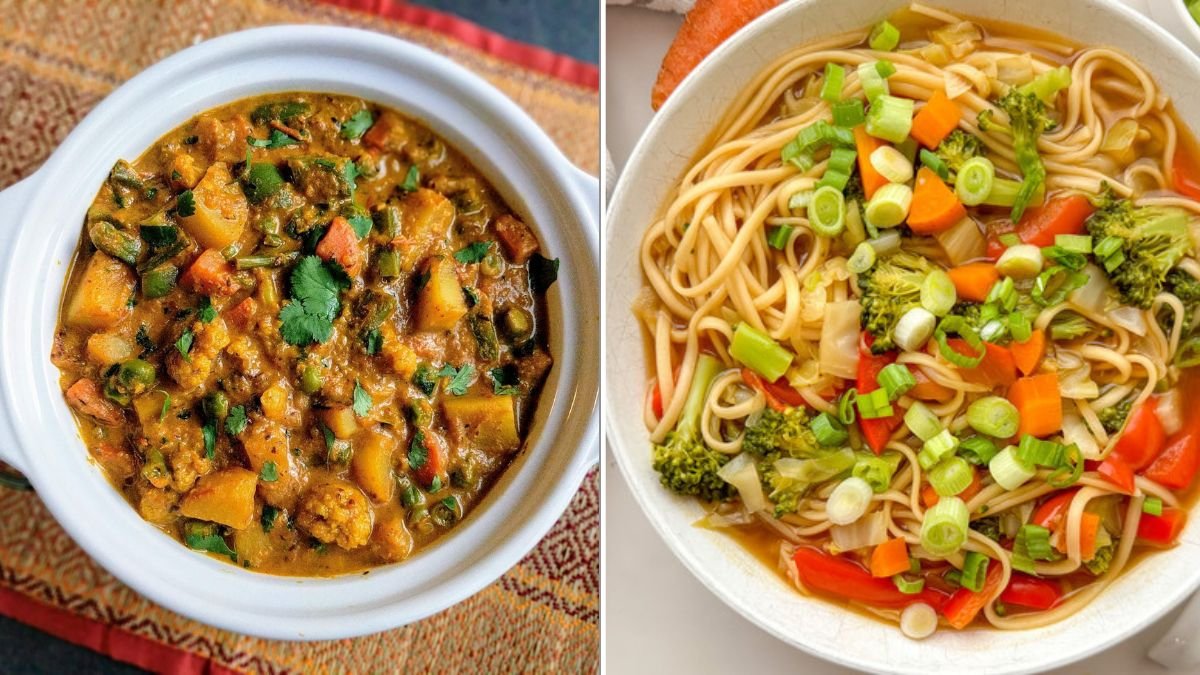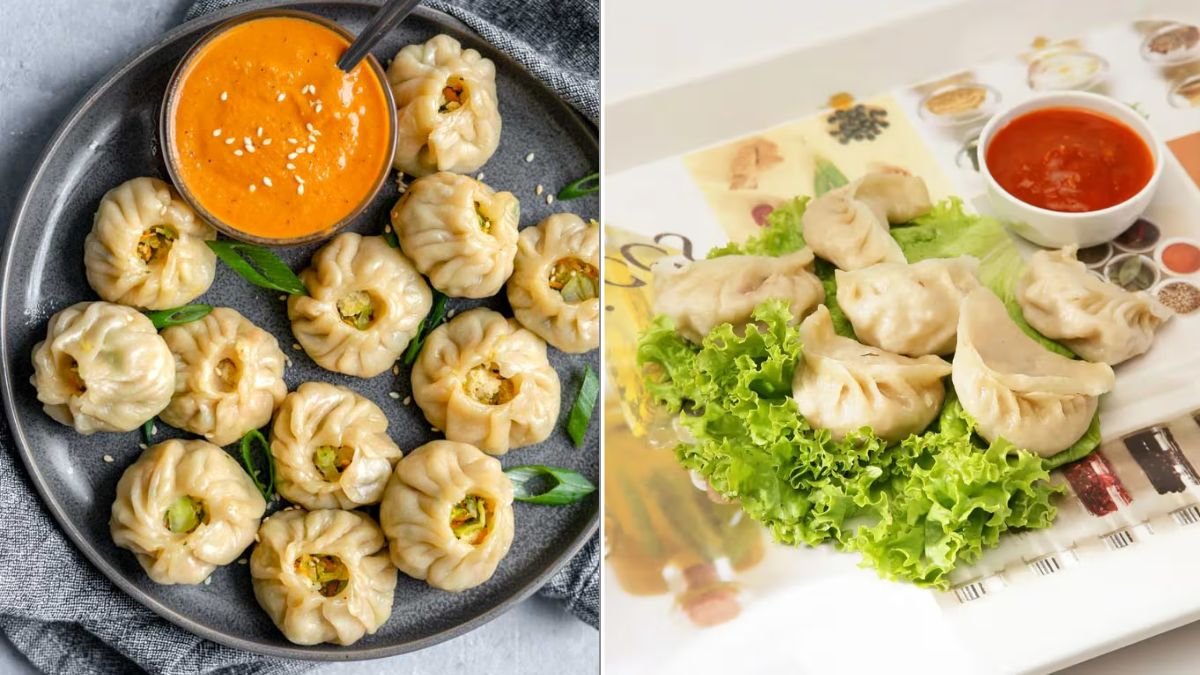Punjabi cuisine is known for its robust flavors, hearty dishes, and vibrant colors, and one of its most beloved creations is Mixed Vegetable Curry. This dish combines an assortment of fresh vegetables, aromatic spices, and rich, creamy tomato-onion gravy, making it a perfect accompaniment to roti, naan, or rice. Packed with nutrients and bursting with flavor, Punjabi-style mixed vegetable curry is a wholesome meal that can be enjoyed by the whole family. With this 5-step guide, you can recreate the magic of Punjabi kitchens right in your home.
Step 1: Gather Fresh Ingredients
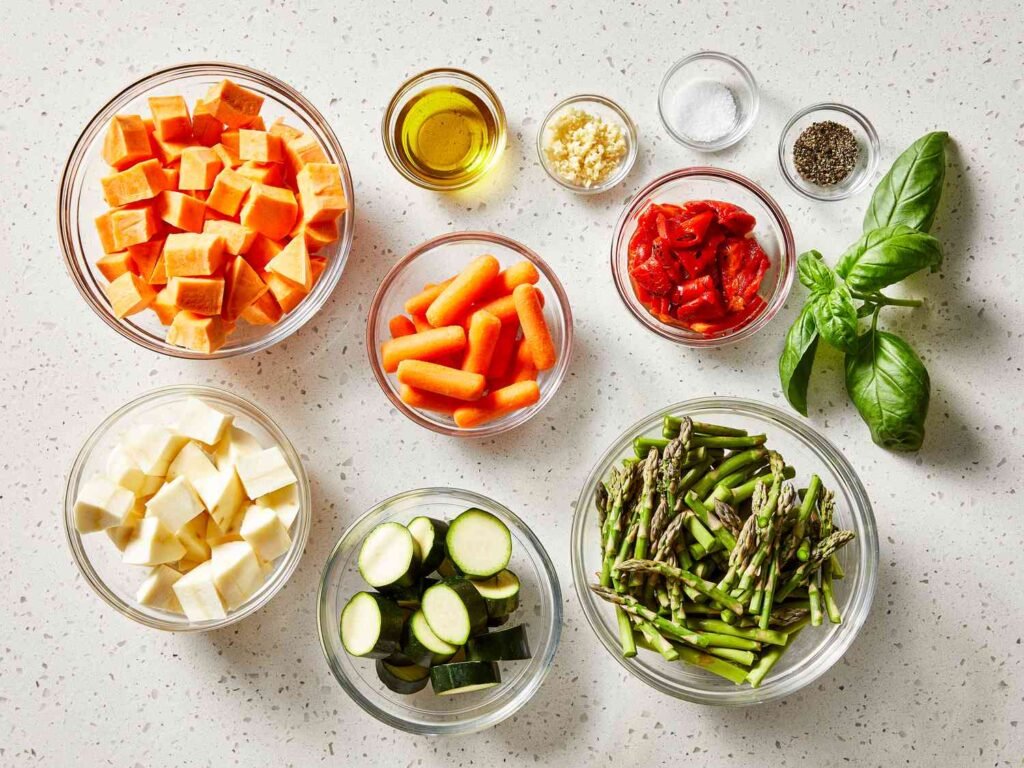
Fresh ingredients are key to making a delicious and nutritious vegetable curry. The right mix of vegetables, spices, and herbs ensures depth of flavor and a colorful presentation.
Vegetables:
- 1 cup carrot, diced
- 1 cup cauliflower florets
- 1 cup beans, chopped
- 1/2 cup peas (fresh or frozen)
- 1 cup potatoes, diced
- Optional: bell peppers, zucchini, or cabbage
For the Gravy:
- 2 medium onions, finely chopped
- 2 medium tomatoes, pureed
- 1–2 green chilies, finely chopped
- 1 tbsp ginger-garlic paste
- 1/2 cup yogurt (optional, for creaminess)
Spices:
- 1 tsp cumin seeds
- 1 tsp turmeric powder
- 1 tsp red chili powder
- 1 tsp coriander powder
- 1/2 tsp garam masala
- Salt to taste
Optional Ingredients:
- 2–3 tbsp cream or cashew paste for richer gravy
- Fresh coriander leaves for garnish
Pro Tip: Choose fresh, firm vegetables to maintain texture and color during cooking.
Step 2: Prepare the Vegetables
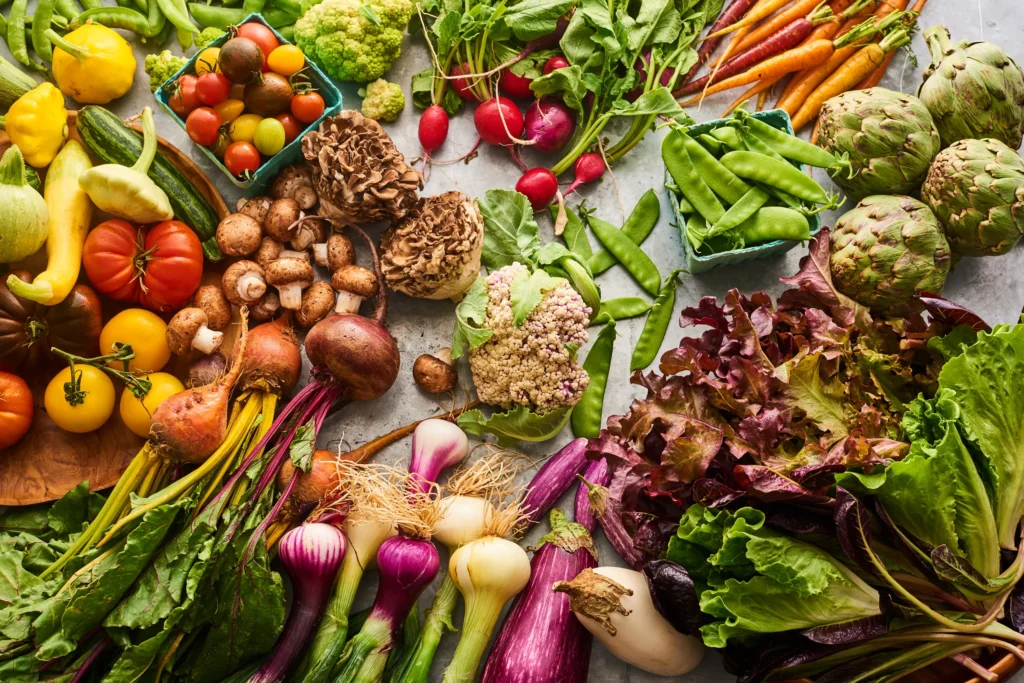
Properly preparing vegetables ensures even cooking and maintains their color and crunch.
Steps:
- Wash all vegetables thoroughly under running water.
- Dice carrots and potatoes into uniform cubes for even cooking.
- Break cauliflower into small florets.
- Chop beans and bell peppers into bite-sized pieces.
- Keep peas ready; if using frozen peas, rinse them in cold water before adding to the curry.
Optional Tip: Lightly blanch harder vegetables like carrots, beans, and cauliflower in boiling water for 2–3 minutes to reduce cooking time and retain nutrients.
Step 3: Prepare the Aromatic Gravy
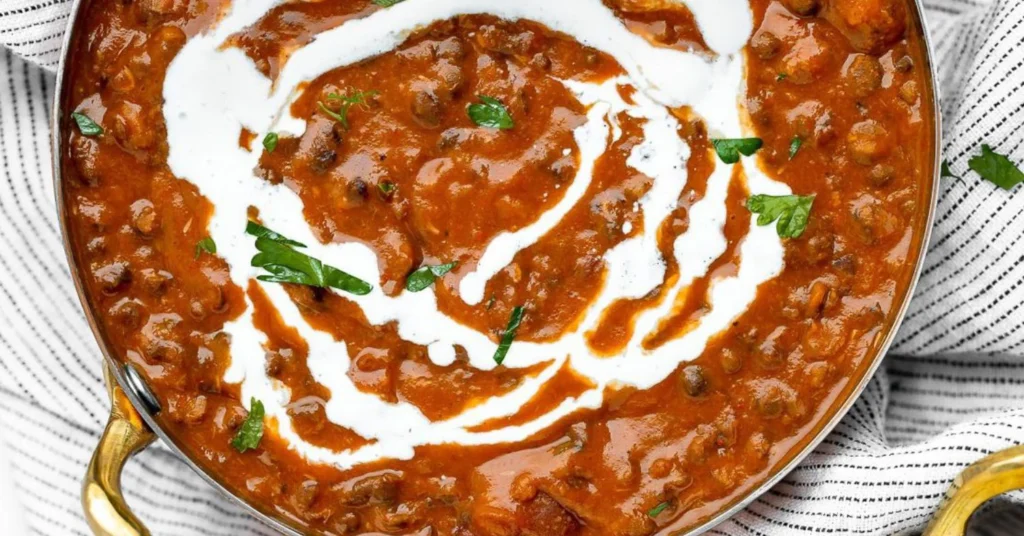
The secret to Punjabi vegetable curry lies in its rich, flavorful gravy. The right balance of spices, onions, tomatoes, and yogurt creates a creamy, aromatic base.
Steps:
- Heat 2–3 tablespoons of oil in a pan or kadai over medium heat.
- Add cumin seeds and let them sizzle until fragrant.
- Add chopped onions and sauté until golden brown.
- Mix in ginger-garlic paste and green chilies; cook for 1–2 minutes until raw aroma disappears.
- Stir in turmeric powder, red chili powder, coriander powder, and salt.
- Add pureed tomatoes and cook until the oil separates from the masala, indicating that the gravy is ready.
- Optional: Whisk in yogurt for creaminess or cashew paste for richer flavor.
Pro Tip: Cooking the masala properly ensures the curry has a deep, rich flavor without any raw taste.
Step 4: Cook the Vegetables in the Gravy
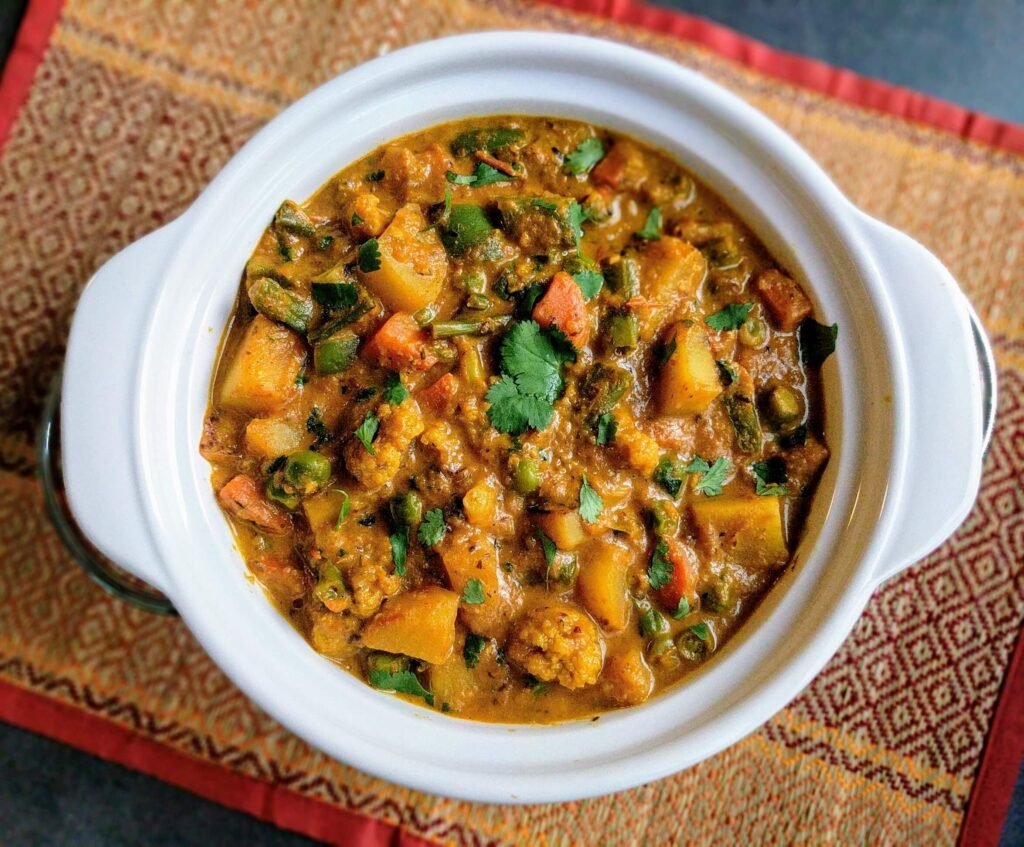
This step transforms your curry into a colorful, hearty dish with perfectly cooked vegetables that soak up the aromatic gravy.
Steps:
- Add all prepared vegetables (carrots, cauliflower, beans, potatoes) to the gravy.
- Stir well to coat the vegetables with spices and tomato-onion mixture.
- Add 1/2 to 1 cup of water, depending on the desired consistency of the curry.
- Cover the pan and simmer on low-medium heat for 10–15 minutes, stirring occasionally.
- Add peas in the last 5 minutes to prevent overcooking.
- Sprinkle garam masala and give a final gentle stir.
Pro Tip: Simmering on low heat allows vegetables to absorb flavors without turning mushy, retaining a perfect bite.
Step 5: Garnish and Serve
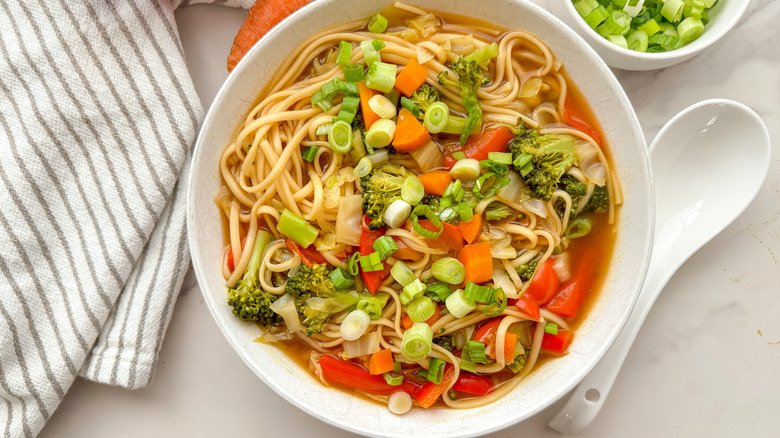
The final touch makes the curry visually appealing and adds fresh flavor notes.
Steps:
- Chop fresh coriander leaves and sprinkle generously over the curry.
- Optional: Drizzle 1–2 teaspoons of cream for a richer, restaurant-style curry.
- Serve hot with steamed rice, jeera rice, roti, naan, or paratha.
Serving Suggestions:
- Pair with steamed basmati rice for a classic combination.
- Serve alongside naan or roti for a fulfilling Punjabi-style meal.
- Include a side of pickle or yogurt for an authentic touch.
Pro Tip: Serve immediately for the best flavor, aroma, and texture, though the curry tastes even better the next day as flavors deepen.
Tips for Perfect Punjabi-Style Vegetable Curry
- Use Fresh Vegetables: Ensures bright colors, crunch, and nutrition.
- Cook Masala Well: Sauté onions and spices properly to remove raw flavors.
- Adjust Water Consistency: Thicker gravy is ideal for roti, while thinner works well with rice.
- Simmer on Low Heat: Prevents overcooked, mushy vegetables.
- Garnish Generously: Fresh coriander adds aroma and visual appeal.
- Optional Cream or Cashew Paste: Adds richness without overpowering the spice profile.
These tips help create a flavorful, restaurant-quality Punjabi curry right at home.
Health Benefits of Mixed Vegetable Curry
Punjabi-style mixed vegetable curry is not only delicious but also nutritious:
- Rich in Vitamins and Minerals: Vegetables provide essential nutrients like vitamin A, C, potassium, and fiber.
- High in Fiber: Aids digestion and promotes satiety.
- Low in Fat (if cooked with minimal oil): Ideal for health-conscious individuals.
- Protein-Rich: Yogurt and cashew paste contribute to protein content.
- Balanced Meal: Can be paired with rice or roti for a wholesome, satisfying meal.
Vegetable curry is an excellent way to incorporate a variety of vegetables into your daily diet while enjoying bold flavors.
Variations of Punjabi Vegetable Curry
Mixed vegetable curry is versatile and can be adapted to suit different tastes:
- Paneer Vegetable Curry: Add cubes of paneer for a protein boost and richer taste.
- Kofta-Style Curry: Make vegetable koftas (fried balls) and simmer in the same gravy for a festive touch.
- Spicy Curry: Increase green chilies or red chili powder for heat lovers.
- Creamy Curry: Blend some cooked vegetables and add cream for a smooth, velvety texture.
- Mixed Dal and Vegetable Curry: Add cooked lentils for added protein and heartiness.
Experimenting with variations keeps the curry exciting and customizable for all occasions.
Serving Ideas
Punjabi mixed vegetable curry can be enjoyed in multiple ways:
- Everyday Meal: Serve with steamed rice or roti for a nutritious lunch or dinner.
- Special Occasions: Serve with butter naan or paratha for a festive meal.
- Lunchbox Option: Pack with chapati or paratha for a wholesome work or school lunch.
- Balanced Diet: Pair with a side of yogurt, salad, or pickle for a complete meal.
Pro Tip: Garnishing with cream or fresh coriander just before serving elevates both taste and presentation.
Quick Hacks for Speedy Curry Preparation
- Use pre-cut vegetables to reduce prep time.
- Keep masala paste ready to speed up cooking.
- Blanch hard vegetables slightly to reduce simmering time.
- Use a pressure cooker to cook vegetables faster without losing flavor.
- Adjust spice levels according to preference for mild or hot curry.
With these hacks, you can prepare Punjabi-style mixed vegetable curry in less than 30 minutes without compromising on taste or authenticity.
Conclusion
Punjabi-style mixed vegetable curry is a colorful, nutritious, and flavorful dish that can be enjoyed by the entire family. By following this 5-step guide—gathering fresh ingredients, prepping vegetables, preparing aromatic gravy, cooking vegetables perfectly, and garnishing before serving—you can recreate restaurant-quality curry right at home.
Key Takeaways:
- Fresh, crisp vegetables are crucial for texture and flavor.
- Cook the masala thoroughly for a rich, aromatic gravy.
- Simmer vegetables on low heat to retain shape and bite.
- Adjust water consistency based on your preference for rice or roti.
- Garnish generously with coriander or cream for added aroma and visual appeal.
By following these steps and tips, Punjabi-style mixed vegetable curry becomes a simple, flavorful, and wholesome addition to your meal rotation. Enjoy this hearty, aromatic, and colorful dish with family and friends for an authentic taste of Punjab!
